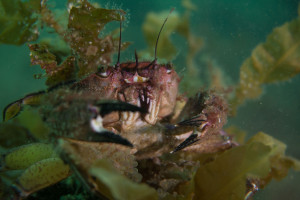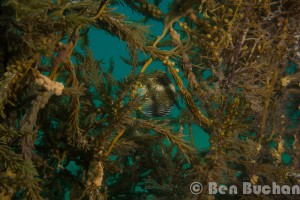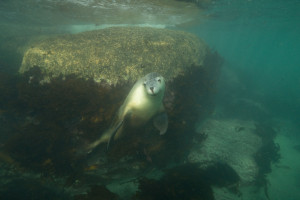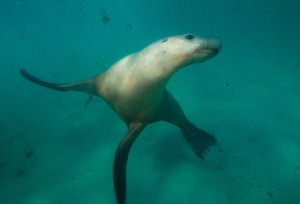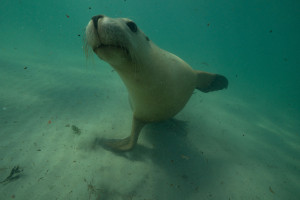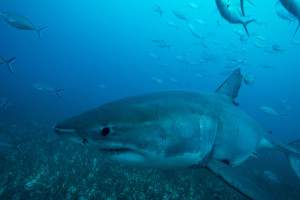What a way to end my time in South Australia with Rodney Fox Expeditions! I have recently returned from my final 10 day voyage on board the Princess II, where we set sail to dive with some other unique sea creatures that this area has to offer.
We first set sail for Tumby Bay, where the mysterious and well camouflaged Leafy Sea Dragon supposedly resides. I had never seen a sea dragon before, let alone a leafy one, and so I was eager to do for a dive to find them! A dragon is very a peculiar name for a such a delicate looking creature. It was obvious why these animals are named ‘leafy’ ones, it took us 20 minutes to find out first one, as they blend in so well with surrounding algae that almost perfectly matches their own leafy appearance! They were slow moving and mesmerising as they displayed their impressive ability to ‘disappear’ within the surrounding weeds, you had to be quick to photograph them! They were so hard to find we often had a diver that would track the leafy sea dragons, and tow an SMB so the divers entering the water knew exactly where to go!
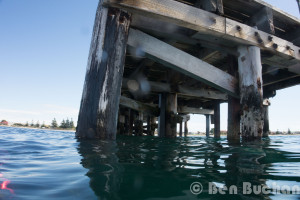
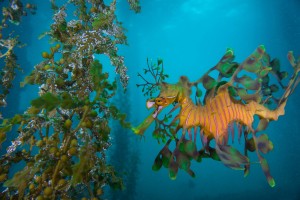
Tumby Bay had a lot more to offer as a dive site than just the leafy sea dragons though! The natural sunlight creeping through the wooden planks above you and the pylons covered in colourful sponges make it a really beautiful dive site. It was a great opportunity to practice my macro photography skills, and I photographed so many crabs and other small critters!
From Tumby Bay we headed northeast to Whyalla, where the Giant Australian Cuttlefish are know to migrate to for mating each year. This area has seen a steady increase in cuttlefish numbers over the past 2 years, which was very promising, and I was excited to see so many at the one site for the first time! I have usually only seen a few giant cuttlefish on a single dive, and I was told to expect dozens within my view underwater at this site!
It was within minutes of entering the water that I spotted the first cuttlefish, and I looked forward to extend my vision only to see what I would have to guess to be more than 50 of these impressive animals swimming around and showing off their remarkable colour displays. I can only imagine the number or cuttlefish that I missed because they would have been so well camouflaged, like this guy! and I only covered a tiny area of the entire dive site.
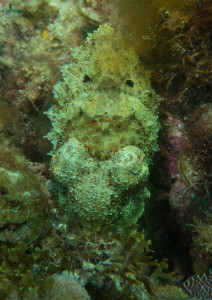
There are so many cuttlefish here that the mating behaviour is quite competitive. Generally, the larger the male, the more likely they are to gain a females attention. The smaller males must try a little harder, so they put on vast colour displays and change their appearance, often imitating a female cuttlefish. This confuses the larger males, and these sneaky ‘females’ can sneak past the large males and go straight to their female mate! How sneaky (or smart) is that?!
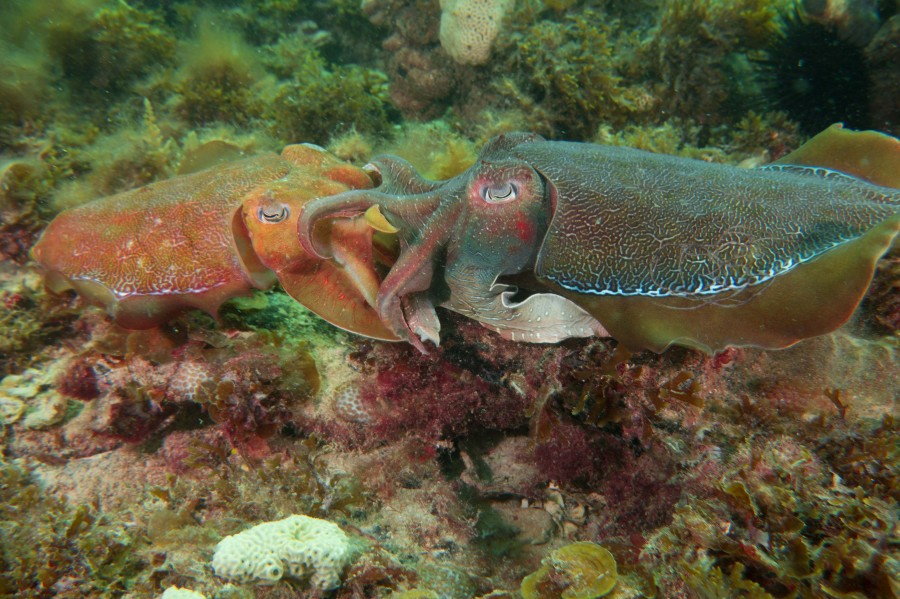

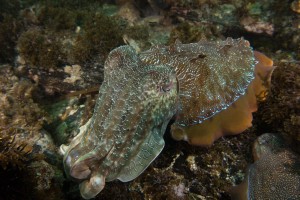
It was only 3 days in, and I had some absolutely amazing underwater experiences that I never imagined I would get, and it’s not even over yet! It was time to head out to the Neptune Islands, but not without a stop at Hopkins Island to visit the local Australian sea lion colony. My first time swimming with seals! These curious creatures were so playful! I found that the more ‘interesting’ you were to them, they more they wanted to play with you. I found myself doing underwater backflips and handstands to gain their attention. They would come and lay next to you on the bottom, they would stick their nose right on your camera lens and they would often mimic your underwater movements. They were extremely fast moving and hard to photograph, but I had a ball!
Next stop was the Neptune Islands, and this was my last chance to try and photograph a super female! We had received word that 2 large (5+m) females had been seen at South Neptunes, and we were tasked with identifying these females and cataloguing a photo ID for migration records. On my first dive in the cage, I was fortunate enough to see a beautiful 5.5m female great white shark! She showed evidence of mating scars and also some other scaring, likely from encounters with other sharks. It was so obvious how dominant she was, with the other sharks always giving her the right of way when swimming, and never approaching her.
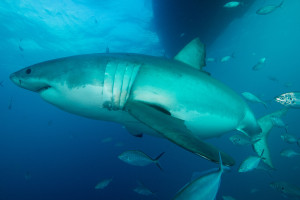
This first cage dive set the tone for the remainder of the trip, with superb shark activity! We observed more sharks that were not present the week prior, and even spotted a few new juveniles that had not been seen around the islands before! It was a fantastic opportunity to be a part of the Rodney Fox Shark Expeditions team to not only dive with, but learn so much about these fascinating sharks. I was privileged to meet Andrew Fox and learn so much about the work they are doing to understand these animals. Next stop is Papua New Guinea!

